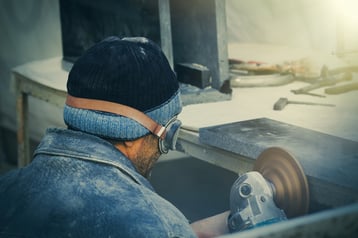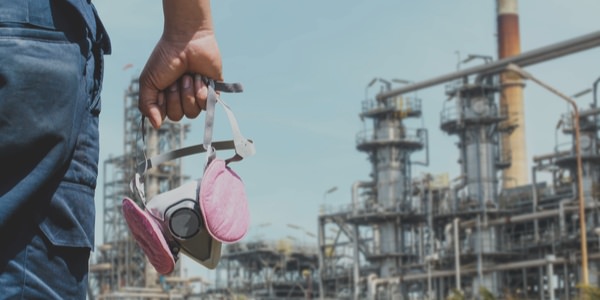
Protecting Workers from Silica Exposure
OSHA rolled out a final rule on respirable crystalline silica (June 23, 2016) and its bringing some big time changes over the next 5 years. Considering it only takes a small amount of that stuff to create monumental health risks, some changes are definitely in order. Too many workers are exposed to silica and it’s about time we did something about it.
Sounds harmless enough. What is crystalline silica?
Let’s break it down so everyone’s on the same page. Silica is found in soil, sand, granite and other minerals. It becomes a major health concern when it is chipped, cut, drilled or ground down and become small particles that workers can breathe in. In other words, what many workers do every single day.
Construction Industry Exposure:
- Sand blasting
- Tunneling
- Jack hammering
- Rock/well drilling
- Concrete mixing/drilling
- Tuck pointing
- Brick/concrete block cutting
General Industry can also be exposed:
- Abrasive blasting
- Cement/brick manufacturing
- Asphalt pavement manufacturing
- China/ceramic manufacturing
- Adhesives, paints, soaps and glass
Maritime exposure:
- Abrasive blasting to remove paint and clean steel hulls, bulkheads, deck and tanks

What are the symptoms of Crystalline Silica Exposure?
Just as asbestos was found to be dangerous to workers, silica is just as deadly.
Here’s why: When crystalline silica turns into a dust, it stays airborne floating through the air, entering anyone’s lungs that are in the area. And when those permissible exposure limits (PELs) go over the safe limit, it’s only a matter of time before someone gets sick. And by sick, I don’t mean, “Boss, I can’t come into work today. I’m not feeling good” (when he really just “had too much of a good time at the Hawkeye’s game last night” sick). We’re talking big time sick.
Breathing in silica dust can cause:
- Lung cancer
- Chronic obstructive pulmonary disease
- Kidney disease
- Silicosis
- Fatigue
- Shortness of breath
- Chest pain
- Respiratory failure
- Death
So what do you do about it? You can rely on luck or follow these rules and keep your workers safe:
- Engineering controls such as water, vacuum or ventilation systems, must be used to reduce dust
- Substitute dangerous materials when possible
- Employer must have a written exposure control plan
- Workers must receive medical exams and given information about their lung health
- Have a training program in place to help workers identify and reduce silica dust
As far as luck is concerned:
“I would wish you the best of luck, but I believe luck is a concept created by the weak to explain their failures” —Ron Swanson
That makes sense. Right? Silica is bad for us. If you inhale it, you are going to get sick from it.
Here are a few quick tips to cut down on silica exposure:
- Control the dust through water systems when we cut, drill, crush or grind
- We need to replace materials that are known to be cancer causing
- We need vacuum systems with HEPA filters that work and ventilation systems to remove as much of the dust from the area as possible
So you did that. Think you’re done? Not so fast, champ.
While you are regularly monitoring PELs, know this: OSHA has set new PELs that are half what it used to be for general industry and 5 times lowers than the old construction industry limits. The new crystalline silica exposure limits are 50 micrograms per cubic meter over an 8 hour time weighted average.
If I can’t eliminate silica, how can I protect my crew?
If you can’t get the silica dust to safe levels with engineering controls, you need a respirator program. And just picking any old one isn’t going to give your workers the protection they need. This is the time you need to speak to the pros (ahem… that would be us). The right respirator will provide the right protection for the job.
This means you need a tight fitting respirator specifically designed for the PEL of respirable silica, respiratory fit test kit and cleaning wipes. Give your people the right tools that will get the job done. Anything less is like…
It’s easy to plan for acute risks that we can see coming. We wear hard hats to protect our skulls against falling objects, we wear cut gloves so we don’t slice our fingers off and we use safety goggles when we don’t want to have acid flying in our eyes. It’s those chronic risks that happen over time that we forget about. Those tiny dust particles that we might not even notice, they’re doing damage. Just give your people the right tools.
And hey, if you need help figuring out what you need, all you gotta do is click that HELP button!
Want to share your thoughts on the dangers of respirable silica? Let us know what you think in the comments below!
Safety: It's Your Life, It's Our Business








